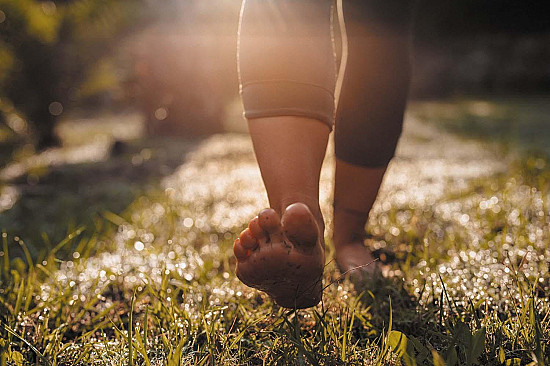
5 timeless habits for better health

What are the symptoms of prostate cancer?

Is your breakfast cereal healthy?

When pain signals an emergency: Symptoms you should never ignore

Does exercise give you energy?

Acupuncture for pain relief: How it works and what to expect

How to avoid jet lag: Tips for staying alert when you travel

Biofeedback therapy: How it works and how it can help relieve pain

Best vitamins and minerals for energy

Should you take probiotics with antibiotics?
8 ways to avoid foot pain

To avoid foot pain and the disability it causes, try these 8 foot-preserving strategies:
1.Lose weight if you’re overweight. The weight of your body stresses your feet with each step. The more weight you carry, the more pressure you put on these two appendages. Research has linked a higher body mass index (BMI) with a greater likelihood of developing pain in the foot joints. Obesity also increases the risk for diabetes, which can damage nerves in the feet.
2. Invest in good shoes. This is one wardrobe item where function is more important than fashion. Wearing a supportive shoe both inside and outside your home can help prevent injuries. Avoid flip-flops, which offer no arch support. Also skip high heels — a notorious cause of deformed toes, bunions, painful feet, and sprained ankles. Look for shoes with a low heel, good arch support, and a nonslip sole. Go to a shoe store where you can get measured. You want to have at least a half-inch of room between the tip of your longest toe and the shoe. Add an orthotic insert for more cushioning.
 3. Stretch. A tight Achilles tendon (the tough band of fibrous tissue that runs down the back of your calf) can cause poor ankle and foot mechanics and put extra strain on your feet. Try this stretching exercise (also pictured right):
3. Stretch. A tight Achilles tendon (the tough band of fibrous tissue that runs down the back of your calf) can cause poor ankle and foot mechanics and put extra strain on your feet. Try this stretching exercise (also pictured right):
1. Stand at arm’s length from a wall, pressing your hands against it and keeping your feet together.
2. Step back with your left leg, bending your right knee slightly and keeping the left heel on the ground. You should feel a stretch along your calf to your ankle. Hold for 20 to 30 seconds.
3. Repeat with your right leg.
4.Don’t strain. Long bouts of running or other intense high impact exercise also puts a lot of strain on your feet and increases your risk for plantar fasciitis — one of the most common causes of heel pain. When starting any new exercise program, ease into it slowly. Listen to your feet and the rest of your body. Wear the right shoes for your activity and iIf anything hurts, stop what you’re doing.
5.Work on your balance. Poor balance is both a cause and a result of foot problems. One out of three people over age 65 has a problem with balance, which puts them at risk for falls. While you brush your teeth or cook dinner, practice standing on one leg for 10 to 20 seconds at a time. For an extra test of your balance, close your eyes.
6. Take a load off. Being on your feet all day is not only hard on them, but also on your lower back and legs. Alternate periods of sitting and standing throughout the day to balance out the pressure.
7. Trim your toenails straight across. Cutting them in a curve or on an angle could cause ingrown toenails. Keep your nails at a medium length — not too long or too short — and wear shoes with enough room around your toes.
8. Treat wounds and infections. Bacteria can sneak into any open wound on your foot, causing an infection. If you have nerve damage from diabetes, you may not feel the injury until bacteria have already started to grow. Keep an eye on your feet. Treat blisters and other injuries, as well as fungal infections like Athlete’s foot. And see your doctor for bunions (growths at the base of the big toe), which can cause foot problems if left untreated.
Image: Jatuporn Tansirimas/Getty Images
Disclaimer:
As a service to our readers, Harvard Health Publishing provides access to our library of archived content. Please note the date of last review or update on all articles.
No content on this site, regardless of date, should ever be used as a substitute for direct medical advice from your doctor or other qualified clinician.

5 timeless habits for better health

What are the symptoms of prostate cancer?

Is your breakfast cereal healthy?

When pain signals an emergency: Symptoms you should never ignore

Does exercise give you energy?

Acupuncture for pain relief: How it works and what to expect

How to avoid jet lag: Tips for staying alert when you travel

Biofeedback therapy: How it works and how it can help relieve pain

Best vitamins and minerals for energy

Should you take probiotics with antibiotics?
Free Healthbeat Signup
Get the latest in health news delivered to your inbox!
Sign Up




